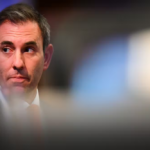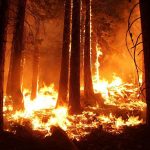An unsettled year for PNG

It was a year of mixed outcomes for Papua New Guinea.
A 7.5 magnitude earthquake in the Highlands caused extensive landslides early in the year, killing more than 150 people and damaging houses, food gardens, roads, airstrips and buildings. The quake’s epicentre was in the Southern Highlands in an area of major oil, gas and mining operations, which were forced to close-down and evacuate staff.
Local landowners demanded an investigation into the ‘causes’ of the earthquake, many believing that oil and gas extraction was responsible. A state of emergency was declared but relief operations were hampered by the remoteness of the affected areas and heavy rains and flooding.
The effects of the earthquake exacerbated problems in the Southern Highlands, which faces recurrent intergroup fighting and unresolved socio-economic grievances.
Landowners were promised royalty payments under an LNG Project Umbrella Benefits Sharing Agreement negotiated in 2009. But the implementation of this agreement has been hampered by the difficulties of identifying the legitimate claimants among contesting groups.
Having returned as prime minister in 2017, Peter O’Neill appeared to have consolidated his position, particularly after the Supreme Court quashed in December 2017 an arrest warrant against him over allegations of corruption. But hostility between O’Neill and his opponents dominated national politics this year.
Ongoing disputes over the results of the 2017 national election continued to occupy the courts. In June, the dismissal of an appeal against the election of Highlands Provincial MP and Governor William Powi (a member of O’Neill’s People’s National Congress) led to an angry mob rampaging through the provincial capital, Mendi.
The mob set fire to buildings and an Air Niugini aircraft that was parked on the runway of Mendi airport. A second state of emergency was declared in the province for a period of nine months and police and Defence Force personnel were deployed to Mendi.
With a referendum on the future political status of Bougainville to be held in 2019, awareness campaigns were stepped up in Bougainville. O’Neill promised that his government will ‘honour every word of the Bougainville Peace agreement’ but at the same time stressed ‘the need to have a united PNG’.
During the year the government granted autonomy status to East New Britain Province, promised autonomy to New Ireland Province and stated its intention to eventually replicate autonomy arrangements in the country’s other 18 provinces – though it might be argued that the 2019 budget further shifted fiscal powers to Waigani.
The main focus of Papua New Guinea’s leaders for much of 2018 was on preparations for the hosting of the Asia Pacific Economic Cooperation (APEC) leaders’ summit in Port Moresby in November.
With some 15,000 people from 21 countries attending, the logistical challenges were formidable and Papua New Guinea received substantial support from Australia, China, New Zealand, Indonesia, the United States and members of the Melanesian Spearhead Group.
The high level of spending (most notably a last-minute purchase of 40 Maserati cars that were air freighted to Port Moresby) was concentrated in the capital at a time when GDP growth forecasts had been downgraded and budget cuts to health and education were impacting the country’s predominantly rural population.
These factors contributed to growing criticisms of the government and two nationwide strikes. And in the days following the summit, a group of APEC Security Task Force personnel stormed the National Parliament to protest the late payment of allowances.
China’s support for the Port Moresby APEC summit is in part a reflection of China’s growing influence in the Pacific and in Papua New Guinea in particular. Chinese investment in and development assistance to Papua New Guinea — mostly through concessional loans — has increased rapidly in recent years.
In late 2017, agreements were signed for Chinese-funded infrastructure projects that totalled US$4.5 billion. And in June this year O’Neill led a delegation on a state visit to China, where he met with Chinese President Xi Jinping and signed up to the Belt and Road Initiative and a free trade agreement.
China’s increasing engagement with the Pacific is causing concern in Australia (and in the United States) and prompted a new push to maintain Australia’s influence in the region. The fourth Australia–PNG Bilateral Security Dialogue took place in Port Moresby in February, and later in the year then Australian foreign minister Julie Bishop and her successor Marise Payne (then defence minister) both visited Papua New Guinea.
Prior to the APEC meeting Australia donated three patrol boats to boost Papua New Guinea’s maritime security. Around the same time the two countries announced plans to develop a joint naval base on Manus Island.
The announcement came after reports that China might be involved in upgrading the strategically based port in Manus (having already worked on an expansion of Papua New Guinea’s largest port in Lae).
In November it was reported that the United States would partner with Australia and Papua New Guinea in the Manus Island base development. But the governor of Manus Province reacted negatively to the proposal.
He said there had been no prior consultation with the Manus provincial government and that after Manus’ bad experience with Australia’s offshore processing of asylum seekers, the development of the Manus naval base would not be welcome.
This article was published by the East Asia Forum.
Ronald May is an Emeritus Fellow at the College of Asia Pacific in the The Australian National University. His interests include Sociolinguistics and Australian, Pacific and Asian governance and history.














